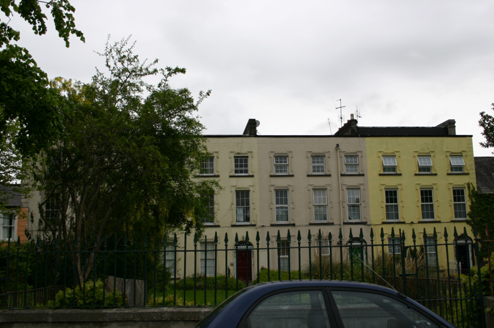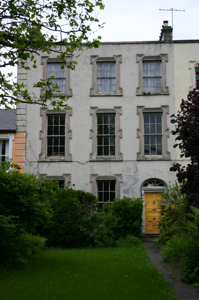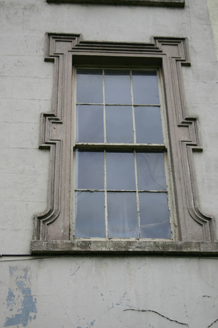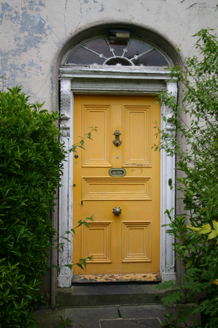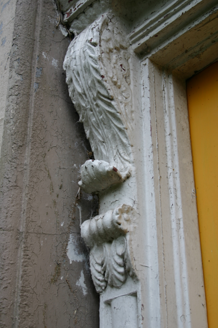Survey Data
Reg No
21521003
Rating
Regional
Categories of Special Interest
Architectural, Artistic
Original Use
House
In Use As
House
Date
1810 - 1850
Coordinates
156906, 156081
Date Recorded
26/06/2007
Date Updated
--/--/--
Description
End-of-terrace three-bay three-storey rendered house, built c. 1830, as part of a terrace of four houses, with full-height single-bay return. Single-span roof behind parapet wall. Two rendered chimneystacks to party walls with clay pots. Painted ruled and lined rendered façade with rusticated quoins to one side, and limestone coping to parapet wall. Square-headed window openings to façade with lugged and kneed stucco architrave, painted sills and six-over-six timber sash windows with segmental horns, and original glass. Three-centred arched door opening with patent rendered reveals, with moulded finish, limestone doorstep and doorcase comprising panelled uprights on architrave blocks with foliate consoles joined by slim timber frieze and cornice; flat-panelled timber door with horizontal central panel and nineteenth century brass door furniture; simple spoked fanlight with lead detailing and historic glass. Limestone flagged front door area. Front site enclosed from pavement by a rendered rubble stone plinth wall surmounted by wrought-iron railings with spearhead finials. Wrought-iron pedestrian gate flanked by limestone piers, gives access to front site path. Light wrought-iron fence to sides. Nineteenth-century rubble stone single-storey outbuilding to rear site lane with double-leaf plank timber vehicular gates and pedestrian door with four-pane overlight. Camber-arched window opening, with exposed frame and wrought-iron grille. Possibly rebuilt wall plate and corrugated metal roof covering, c. 2000.
Appraisal
The first of four three-bay four-storey terraced houses built, it would appear, concurrently. The large piano nobile windows at first floor level are indicators of a late-Georgian building format. The house retains much of its original character with original windows and glazing, moulded architraves, door and fanlight. The front site boundary wall and railings, and the outbuilding to the rear site are also important to the historic context of this house.
